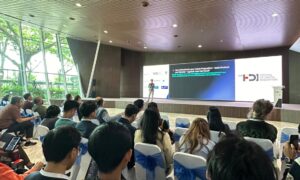Starting as a workers’ college in 1887 and developing into the world’s top 200 universities today, RMIT University’s achievements and countless honors in the past 100 years of its establishment are worthy of the pride of every RMIT person.
Let us take this opportunity to review the long history and proud achievements of RMIT University together!
History of the RMIT University
Let’s go back in time to 135 years ago…
In 1887, then-politician and philanthropist Francis Ormond founded Working Men’s College, determined to provide a quality education to Melbourne’s labourers.
Just one year after its founding, the Workers College started offering courses in technology, business and the arts to people in Victoria. In 1934, the college was renamed Melbourne Technical College.
In 1954, in recognition of its educational contribution to the Commonwealth during World War II, the Workers’ College was granted royal patronage by Queen Elizabeth II. The college has a new name: Royal Melbourne Technical College and is a pioneer in the provision of vocational and tertiary education. In the same year, Hibernian Hall (renamed Story Hall in 1959) was acquired by the college and is still in use today.
In 1992, the college officially changed its name to Royal Melbourne Institute of Technology (RMIT). To this day, RMIT University remains the only higher education institution in Australia entitled to use the “Royal” prefix. It is also the largest dual-sector university in Australia.
Growing RMIT University
In the 1990s, in order to strengthen the professionalism in design and business, RMIT University began to merge with other institutions, and in 1993 further expanded to Melbourne’s Brunswick campus and Bundoora campus, and start going out to the world.
From 2001 to 2013, RMIT’s footprints spanned mountains and seas, and shuttled through cities in different countries. This includes campuses and study centers in Ho Chi Minh, Vietnam, and Hanoi, and Barcelona, Spain.
Right now, RMIT University has continued to be recognized by the Vietnamese government and has been awarded the Golden Dragon Award for the 18th time in a row in 2022, in recognition of its excellence in education and research.
RMIT leads the world
Hands-on learning has always been a tradition at RMIT. Up to now, RMIT’s practical training courses have a history of 100 years. The university increases the employability of students by imparting career-related skills through courses.
To date, RMIT is the only university in Australia to offer a degree in space science, connecting students with industry employers such as the Commonwealth Scientific and Industrial Research Organisation and the Bureau of Meteorology.
RMIT is committed to lead global technology. The Swanston Academic Building and RMIT Design Hub opened to RMIT students and teachers in 2012, ushering in a new era of learning, teaching and research.
In 2014, RMIT’s MicroNano Research Facility was completed and commissioned, allowing talented researchers to continue exploring new research areas and changing the future.
In 2015, the SkinSuit, invented by RMIT alumni, and aerospace engineer Dr James Waldie and his team was donned by ESA astronaut Andreas Mogensen and aboard the International Space Station.
In 2018, RMIT launched the first blockchain course in Australia to fully support students to prepare for careers leading the new digital economy. (To get more courses provided by RMIT University, please search via Course Finder.)
RMIT is now a globally renowned university with strong leadership and innovation in technology, design and enterprise. The university currently has 4 colleges, and 16 departments, and has more than 96,000 students and 9,000 employees worldwide.



































